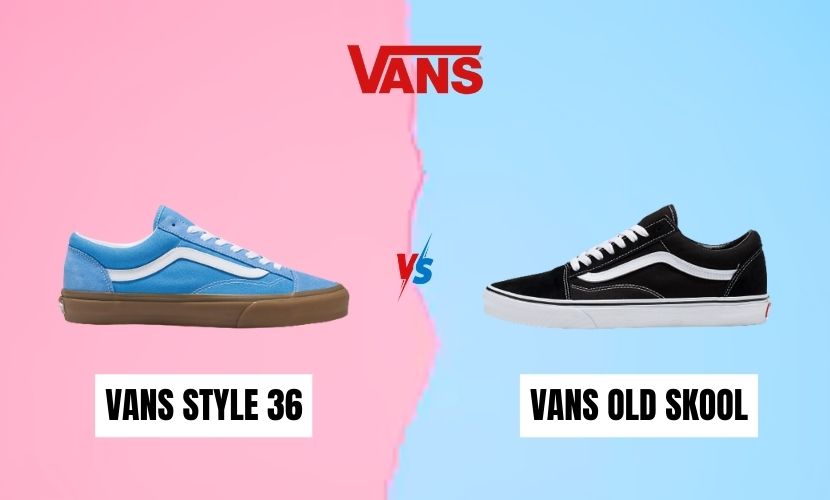Regarding running shoes, Hoka One One is a brand that has attained a lot of renown in recent years. Two of their most famous models are the Gaviota and the Bondi. On the contrary, both shoes are admired for their padding and comfort, and there are several major dissimilarities between the two that athletes should be aware of before hitting the jackpot.
The Hoka Gaviota is a steady running shoe with J-Frame technology to avert inward roll or overpronation. It is structured for runners who require additional support and firmness while running. On the other side, the Hoka Bondi is an average running shoe that is popular for its plush padding and comfort. It is an amazing choice for runners who prefer cushioning over stability.
While the Gaviota provides more stability, it is also weigh more and may be less snug for some runners. Conversely, the Bondi is a great choice for athletes who prefer comfort but may need to give more aid to those who require it. Both shoes have advantages and disadvantages, and runners should select the perfect fit for their needs.
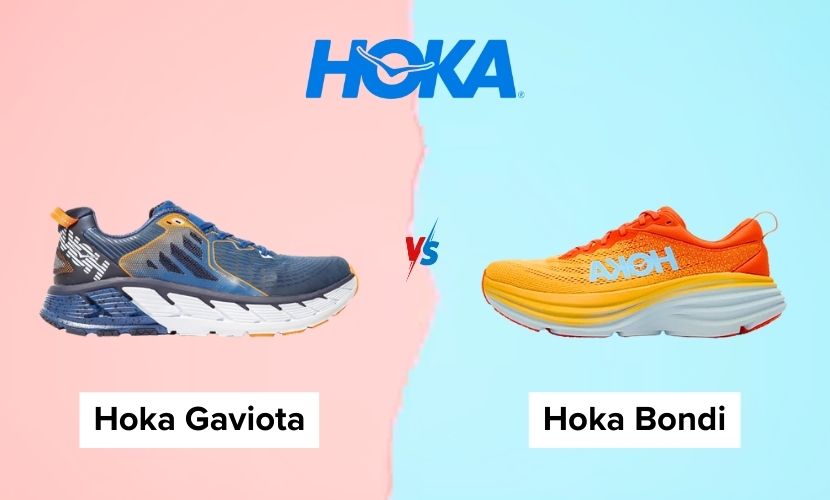
Feature Table: Hoka Gaviota VS Hoka Bondi
| Feature | Hoka Gaviota | Hoka Bondi |
| Pronation Support | Offers support for overpronation | Neutral shoe, no corrective support |
| Cushioning | Balanced padding, plush foam | Ample cushioning for comfort |
| Stability | Extra stability with J-Frame technology | Stable ride, but not corrective |
| Heel-to-Toe Drop | 5mm drop | 4mm drop |
| Weight | Slightly heavier | Slightly lighter |
| Midsole | Stabilized foam volume | Ample cushioning with rocker shape |
| Upper | Breathable mesh, cushioned collar and tongue | Breathable mesh, comfortable fit |
| Foot Type | For overpronators and stability seekers | Neutral runners seeking cushioning |
| Use | Long runs, support | Comfortable runs, cushioning |
| Price Range | $140 – $250 | Around $200 |
| Fit and Comfort | Supportive fit, cushioned | Comfortable fit, padded |
| Durability | Hard-wearing rubber outsole, sturdy upper | Durable construction |
Overview of Hoka Gaviota
The Hoka Gaviota is a firm shoe structured to help athletes who overpronate. It offers a broad base and a lacing system that personalizes the upper lockdown for a snug and safe fit.
The shoe’s midsole is structured with plush, reactive foam that gives a snug ride while providing support. The Gaviota also contains a J-Frame pattern that aids in instructing the foot through its innate gait cycle, lessening the possibility of injury.
The Gaviota’s outsole is designed of durable rubber and contains a versatile tread pattern that gives remarkable traction on various surfaces. The shoe’s upper is structured of permeable mesh and has a cushioned tongue and collar for extra comfort.
In the case of specifications, the Gaviota contains a 5mm drop and a stabilized foam volume in the midsole. The men’s edition contains a total volume of 731 cm3; on the contrary, the women’s version comprises 575 cm3. The shoe’s spring computation is 36 x 20 mm.
Overall, the Hoka Gaviota is a dependable stability shoe that provides a snug and supportive ride for athletes who overpronate. Its broad base, plush foam, and J-Frame pattern create it a great option for long runs or regular training.
Overview of Hoka Bondi
The Hoka Bondi is a famous running shoe popular for its extraordinary padding and comfort. It is structured to offer a smooth ride and minimize effects on the feet and joints throughout long runs.
One of the chief attributes of the Hoka Bondi is its balanced padding, which shows that the shoe has the same quantity of padding in the heel and forefoot. This supports encouraging a more natural and systematic stride while lessening the possibility of injury.
The shoe also contains a 5mm drop, which is comparatively low contrasted to other running shoes in the industry. This low drop aids in promoting a more innate foot strike and encourages the athlete to land on the midfoot or forefoot rather than the heel.
The Hoka Bondi is comparatively heavy compared to other running shoes, with the men’s edition weighing approximately 11.40 oz and the women’s version weighing around 9.30 oz. However, the shoe’s padding and aid compensate for its weight, giving it a snug and stable ride.
The Hoka Bondi is perfect for runners who prefer comfort and padding. It’s stabilized cushioning, deep drop, and stable pattern make it a dependable option for long runs and regular training.
Key Features of Hoka Gaviota
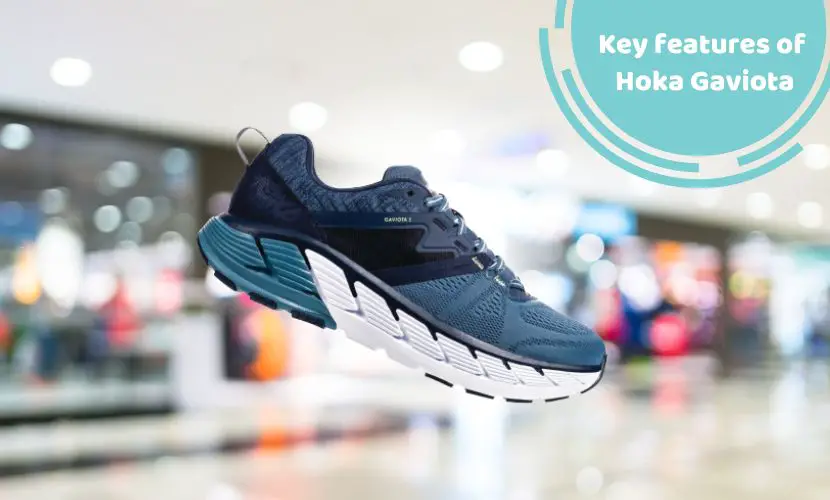
The Hoka Gaviota is a steady running shoe for runners requiring additional support and padding. The following are several major features:
J-Frame Technology
The Gaviota offers Hoka’s J-Frame technology, a rubberized foam that covers around the heel and elongates through the midfoot to offer additional support and firmness. This technology aids in averting overpronation when the foot spins inward too much throughout the running gait.
Balanced Cushioning
The Gaviota contains a balanced padding system, which shows that the heel and forefoot are at a similar distance from the ground. This supports offers appropriate alignment and minimizes the possibility of injury. The shoe also contains a plentiful cushioning system that gives a snug ride.
Breathable Upper
The upper of the Gaviota is designed of permeable manufactured mesh, which aids in maintaining the foot cool, fresh, and dry during the run. The shoe also contains a cushioned tongue and collar for additional comfort.
Maximum Stability
The Gaviota is considered an additional stability shoe, which shows that it gives a great standard of support and steadiness for runners who require it. The shoe contains a 5mm drop and a complete foam volume in the midsole of 731 cm3 for men and 575 cm3 for women.
Lightweight
Despite its firm attributes, the Gaviota is still a feathery shoe. The men’s edition weighs 11.40 oz; on the contrary, the women’s version weighs approximately 9.30 oz. This makes it a good choice for athletes who need additional support but don’t want to sacrifice speed.
In summary, the Hoka Gaviota is a steady running shoe containing J-Frame technology, balanced padding, a permeable upper, additional stability, and a delicate pattern. These characteristics make it a popular option for athletes requiring additional support and padding during their runs.
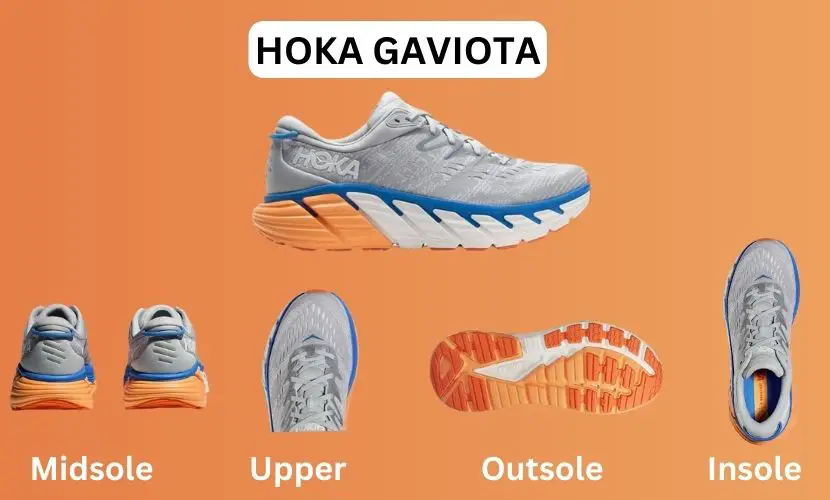
Key Features of Hoka Bondi
Hoka Bondi is a famous running shoe popular for its comfort and padding. The following are several major attributes of the Hoka Bondi:
- Weight: The Hoka Bondi is a feathery shoe that weighs 11.40 oz for men and 9.30 oz for women. This makes wearing and running in for elongated periods comfortable without feeling weighed down.
- Stability: The Hoka Bondi is an average shoe that does not offer any corrective aid. However, it provides a steady ride adaptable for athletes who do not overpronate.
- Drop/Offset: The Hoka Bondi contains a 5mm drop, which shows the heel and toe are only 5mm apart. This gives a more innate and efficient running stride.
- Cushioning: The Hoka Bondi contains a stabilized volume of foam in the midsole, containing 731 cm3 for men and 575 cm3 for women. This gives an opulent and snug ride that is ideal for long-distance running.
- Spring: The Hoka Bondi contains a moderate quantity of curvature, which gives a reactive and energetic ride. This creates it perfect for athletes who desire a shoe that can support them in picking up the pace.
The Hoka Bondi is a snug, firm running shoe ideal for neutral athletes who desire a luxurious and reactive ride.
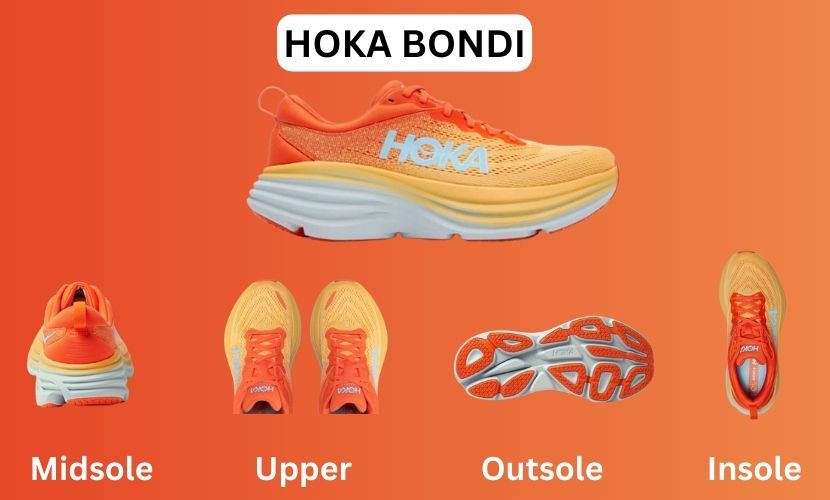
Comparing the Fit and Comfort
Fit and comfort are two of the most efficient factors in selecting running shoes. In this part, we will compare the fit and comfort of Hoka Gaviota and Hoka Bondi to support you in generating an informed decision.
Hoka Gaviota
The Hoka Gaviota is structured to offer a snug and supportive fit for athletes who overpronate. The shoe provides a broad toe box that permits your toes to splay innately, lessening the possibility of blisters and other foot injuries. The shoe’s upper part is designed of a permeable netting material that keeps your feet cool, fresh, and dry even during long runs.
The Gaviota also contains an opulent midsole that gives outstanding padding and support. The shoe’s J-Frame technique aids in instructing your foot into a more innate gait cycle, minimizing the possibility of injury and tiredness.
Hoka Bondi
The Hoka Bondi is a moderate running shoe with a snug and padded ride. The shoe’s upper is engineered of a permeable netting material that permits your feet to breathe, minimizing the possibility of blisters and other foot injuries. The Bondi also contains a broad toe box that allows your toes to spread naturally, offering a snug and natural fit.
The shoe’s midsole is constructed of EVA foam, offering remarkable padding and support. The Bondi also provides Hoka’s Meta-Rocker technique, which aids in instructing your foot into a more natural stride cycle, lessening the possibility of injury and fatigue.
Comparison
The Hoka Gaviota and Hoka Bondi offer athletes a snug and supportive fit. However, the Gaviota is structured for players who overpronate; on the contrary, the Bondi is a moderate running shoe. The Gaviota contains a J-Frame technology that gives corrective support; on the other hand, the Bondi contains Meta-Rocker technology that instructs your foot into an innate gait cycle.
In the case of the upper, both shoes contain a permeable netting material that maintains your feet cool, fresh, and dry. The Gaviota contains a broader toe box that permits your toes to splay naturally; on the other hand, the Bondi also has a broad toe box that offers a snug and natural fit.
Both shoes are remarkable options for athletes who value ease and support. The selection between the two will eventually be based on your running style and foot kind.
Performance and Durability
Regarding performance and durability, both Hoka Gaviota and Bondi are major contenders. The shoes are structured to offer a snug and stable ride, creating them adaptable for long-distance running and regular use.
Regarding performance, the Hoka Gaviota is a rugged shoe structured to help athletes eliminate inward spin and overpronation. It contains a balanced padding system that gives a snug and reactive ride. The shoe also provides a J-Frame pattern that offers support and firmness without adding additional weight. The Gaviota contains a 5mm drop and an entire volume of foam in the midsole of 731 cm3 for men and 575 cm3 for women. The spring computation of the shoe is 36 x 20 mm.
Conversely, the Hoka Bondi is an opulent running shoe with remarkable padding for a snug ride. It contains a mushy memory foam collar that molds to the foot’s appearance for a personalized fit. The Bondi comprises a 4mm drop and a complete volume of foam in the midsole of 746 cm3 for men and 581 cm3 for women. The spring calculation of the shoe is not specified.
In the case of durability, both shoes are constructed to last. The Gaviota contains a hard-wearing rubber outsole that gives outstanding traction on distinct surfaces. The upper is designed with permeable netting that is hard-wearing and delicate. The Bondi also contains a durable rubber outsole that offers excellent grip. The upper is designed of a lightweight and porous material constructed to last.
Overall, the Hoka Gaviota and Bondi are top-performance shoes constructed to last. The Gaviota is a steady shoe that gives support and stability; conversely, the Bondi is a luxurious running shoe with remarkable padding.
Price Comparison
Concerning the price comparison between the Hoka Gaviota and Bondi, there are several things to examine. The shoes’ sot can differ depending on the retailer, the model, size, and breadth of the shoe.
The Hoka Bondi 8 is a more costly option, with a price label of around $200 based on the model and size of the shoe. Conversely, the Hoka Gaviota 4 is accessible from $140 to $250 at distinct price extents.
It’s worth mentioning that the Hoka Gaviota is quite a considerable shoe, structured for runners who require stability and aid. Conversely, the Hoka Bondi is an opulent road runner, giving all the cushioning a runner could desire from a shoe.
Concerning the price comparison, it’s efficient to examine the particular requirements of the runner. If firmness and support are a major priority, the Hoka Gaviota may be worth the additional investment. The Hoka Bondi may be the finer option if a luxurious, comfortable ride is the basic concern.
Pros and Cons of Hoka Gaviota
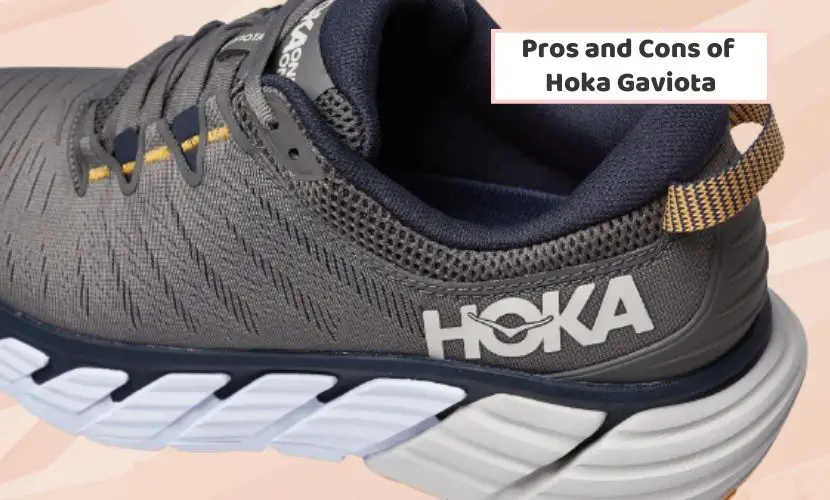
The Hoka Gaviota is a firm running shoe for runners requiring extra aid and cushioning. The following are several advantages and disadvantages of the Hoka Gaviota:
Pros
- Good Stability: The Hoka Gaviota contains a J-Frame technology that offers dynamic steadiness to the foot, lessening the possibility of injuries.
- Adaptable Fit: The H-Frame technology in the shoes upper offers a personalized fit, verifying that the shoe caters to the foot’s appearance and size.
- Comfortable: The Hoka Gaviota contains an opulent padding system that absorbs remarkable impact, making it snug for long-distance running.
- Breathable: The shoe’s upper is engineered of a permeable netting material that permits air to flow, maintaining the foot dry and snug.
- Durable: The Hoka Gaviota is constructed of high-standard materials verifying that the shoes endure long.
Cons
- Narrow Midfoot: Several athletes mentioned that the Hoka Gaviota’s midfoot area is tight, making it uncomfortable for players with broader feet.
- Adjustment Period: Some athletes have stated that they require several runs to maintain the shoe’s padding system.
- Price: The Hoka Gaviota is a standard running shoe, and its cost may be high for several athletes.
Overall, the Hoka Gaviota is an outstanding running shoe for athletes who require additional support and padding. It contains a few negligible disadvantages, but its advantages outweigh them.
Pros and Cons of Hoka Bondi
The Hoka Bondi is a famous running shoe with a snug and supportive ride. The following are several advantages and disadvantages of the Hoka Bondi:
Pros:
- Comfortable fit: The Hoka Bondi contains an opulent and padded midsole that gives a snug fit for long runs and regular wear.
- Durable construction: The Hoka Bondi is designed with top-quality materials to resist running deterioration.
- Breathable upper: The Bondi’s upper is engineered with a permeable netting material that aids in maintaining feet cool, fresh, and dry during runs.
- Wide toe box: The Bondi contains a broad toe box that permits natural foot movement and supports to avert blisters and other foot injuries.
Cons:
- Heavy: The Hoka Bondi is a heavier shoe, which may be better for athletes who prioritize a feathery shoe for speed workouts or races.
- Expensive: The Bondi is one of Hoka’s most costly running shoes, which may disadvantage athletes on a budget.
- Lack of flexibility: The Bondi’s massive midsole makes it feel less stretchable than other running shoes, which may not be perfect for runners prioritizing a more natural feel.
Overall, the Hoka Bondi is a firm running shoe that provides a snug and supportive ride. However, its weight and cost may be a disadvantage for several runners.
What is the difference between the Bondi and Gaviota 4?
The Hoka One One Bondi and Gaviota 4 are famous running shoes that provide distinct attributes to embrace the requirements of runners. The following are several major dissimilarities between the two shoes:
Weight
One of the most remarkable dissimilarities between the Bondi and Gaviota 4 is their weight. The Gaviota 4 is a massive shoe, weighing vaguely half an ounce more than the Bondi in both the men’s and women’s designs.
Stability
Another chief difference between the two shoes is their rugged attributes. The Gaviota 4 is a max-padded stability shoe with a J-Frame technology to avert inward spin or overpronation. Conversely, the Bondi is considered an average running shoe with no stability characteristics.
Heel-to-Toe Drop
The heel-to-toe drop is another part where the Bondi and Gaviota 4 vary. The Bondi contains a 4mm heel-to-toe drop; on the contrary, the Gaviota 4 contains a 5mm heel-to-toe drop. This shows that the Gaviota 4 has a moderately greater heel and may offer more support for athletes who require it.
Fit
The fit of the Bondi and Gaviota 4 is also distinct. The Gaviota 4 characteristics an H-Frame that give a suitable fit; on the contrary, the Bondi has a more customary fit. Furthermore, some athletes have mentioned that the Gaviota 4 contains a tight midfoot, which may require several runners to adjust.
Overall, the Bondi and Gaviota 4 are remarkable running shoes that provide different attributes to embrace the requirements of runners. The Bondi is a feathery moderate shoe that provides a deep heel-to-toe drop; on the other hand, the Gaviota 4 is a massive steady shoe that provides a greater heel-to-toe drop.
Hoka Gaviota vs Bondi: Which is better for running?

The Hoka Gaviota is a rugged shoe constructed to help athletes who overpronate or have inward-spinning feet. It contains a broad base and a supportive midsole that gives stability and averts extra foot movement. The Gaviota contains a stabilized padding system, showing an average standard of padding in both the heel and forefoot.
Conversely, the Hoka Bondi is a plush padded shoe with additional ease and cushioning. It has a massive midsole that soaks up the impact and minimizes the effect on joints. The Bondi is perfect for athletes who prefer padding and ease over stability.
In the case of the sole, both shoes contain a rocker pattern that encourages an even and efficient stride. The Gaviota contains a late-stage rocker that gives a stable base; on the other hand, the Bondi contains an early-stage rocker that provides a more natural feel.
Regarding the price, the Gaviota is moderately cheaper than the Bondi, but both shoes are on the greater end of the cost spectrum.
Overall, the Hoka Gaviota is finer suited for runners who require stability and aid, while the Bondi is perfect for those who prefer padding and comfort. Testing both shoes and detecting which feels more snug and adaptable for your running style and requirements is necessary.
Hoka Gaviota or Hoka Bondi: Which shoes are good for plantar fasciitis?
There are several things to examine regarding opting between Hoka Gaviota and Hoka Bondi for plantar fasciitis. Both shoes are popular for their padding and stability attributes, making them famous among athletes with foot pain. However, several differences between the two may create one more adaptable for plantar fasciitis than the other.
Initially, the Hoka Gaviota is considered a firm shoe, showing additional support attributes for overpronation. This can be advantageous for athletes with plantar fasciitis who require extraordinary support to avert their feet from spinning inward. On the other side, the Hoka Bondi is a moderate shoe, which shows it does not contain any extra support characteristics and is ideal for runners having a neutral gait.
Secondly, both shoes have remarkable cushioning, but the Hoka Bondi contains more padding than the Gaviota. This can be perfect for athletes with plantar fasciitis who require extra impact absorption to lessen the effect on their feet. However, the additional padding may make the shoe massive and less responsive.
Finally, it is efficient to mention that the perfect shoe for plantar fasciitis differs from person to person. Several athletes may discover the added aid of the Gaviota more advantageous, while others may prioritize the additional cushioning of the Bondi. Testing both shoes and detecting which feels more snug and supportive for your requirements is suggested.
In conclusion, both Hoka Gaviota and Hoka Bondi are good choices for athletes with plantar fasciitis. The Gaviota supports overpronation; conversely, the Bondi has more padding.
Hoka Gaviota vs Bondi: Which is better for women?
Regarding selecting between the Hoka Gaviota and Bondi models, women athletes have several major factors to consider. Both shoes are popular for their outstanding padding and support, but they vary in a few efficient ways.
Weight
The Hoka Bondi may be the finer option for women who prefer feathery shoes. It is vaguely half an ounce more delicate than the Gaviota in both men’s and women’s designs. This can create an efficient difference in long-distance running, where every ounce matters.
Heel-to-Toe Drop
The Bondi contains a heel-to-toe drop of 4mm; on the contrary, the Gaviota contains a drop of 5mm. This shows that the Gaviota gives moderately more padding in the forefoot, which may be advantageous for women who experience discomfort or ache in this area during runs.
Stability
The Hoka Gaviota is structured to offer stability for athletes who overpronate or contain inward roll. It contains a broader base and rugged midsole than the Bondi, making it a finer option for women requiring additional support and firmness during their runs.
Comfort
Both the Hoka Gaviota and Bondi are popular for their extra comfort. The Bondi contains luxurious padding; conversely, the Gaviota is a stabilized padded shoe. However, some athletes discover the Gaviota more snug because of its well-cushioned interior and feathery construction.
Women who prefer lightweight shoes may go for the Bondi, while those who need additional stability may prioritize the Gaviota. Both shoes provide remarkable padding and support, making them amazing choices for women who want to run easily.
Conclusion
The Hoka Gaviota is structured for athletes who require stability and aid to correct overpronation. It provides a stabilized foam volume in the midsole and a 5mm drop/offset. The shoe is more massive than the Bondi but gives more stability.
Conversely, the Hoka Bondi is an opulent running shoe focusing on padding. It offers a rocker-shaped midsole that creates it more energy-saving and systematic. The shoe contains a broader midsole base, which flares out for finer stability.
If you are an athlete who requires stability and aid, the Hoka Gaviota is the superior choice. However, if you are searching for a padded shoe having a rocker-shaped midsole, the Hoka Bondi is the way to go.
It’s worth mentioning that several runners discover the Gaviota to be poorly structured and built, while others admire its stability. Conversely, the Bondi is typically well-received by athletes who admire its padding and energy-saving pattern.
In summary, the Hoka Gaviota and Hoka Bondi have advantages and disadvantages. It’s necessary to consider your requirements and preferences when selecting the two.
Read more on:



